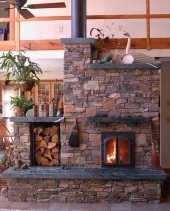


Dale Hodgins wrote:Fiddling with it and allowing it to drift over to the neighbours is shameful. Stop it if you've already begun. [/b]

I recall it being said that 1 lb propane has about the same heat as 2 lb of air dry wood having 20% moisture. Does anyone know if those to points are true?Jim Fisk wrote:Somehow we made it and the drying wood gave off lots of moisture
Cj Verde wrote: Still, pound for pound may not be the best way to compare.
Cj Verde wrote:
I don't think 20lbs of propane = 20 lbs of wood.

Russell Davis wrote:Yesterday I cobbled together my first attempt at a rocket-wood-dust-stove for purposes of mass heating & dry steam generation:
quote]
Version 1.3 tested tonight.
Added a bit of kerosene to the slightly damp saw dust
added two more burn holes in the sawdust charge
added a red hot secondary burn plate raised 1/2" off the top of the 35 g dust charge dum where the plate had a down turned edge to trurn the flame down easier while being aided w by burnulli flow from 50g drum lid & plenum pressure between lid and burn plate
at that level the 50g drum got cherry red and no smoke was visible arround the cowled 50g barrel of water to be boiled.
then there were some problems that reduced the burn rate.
Next B-)
